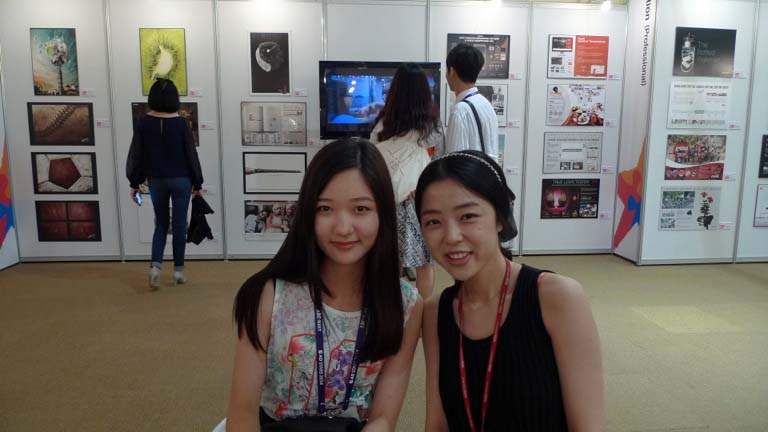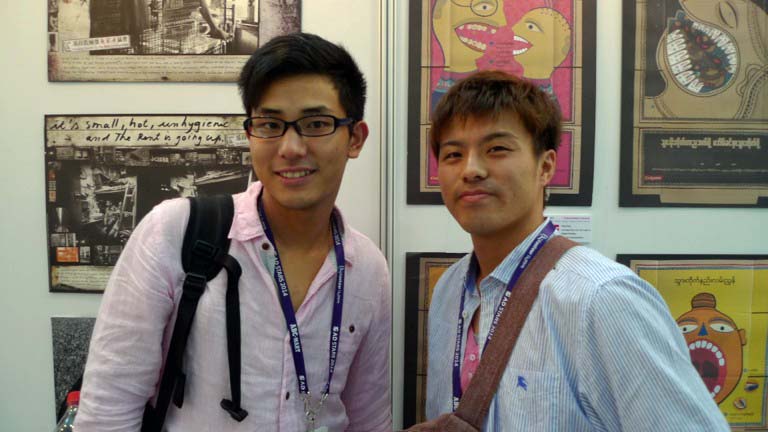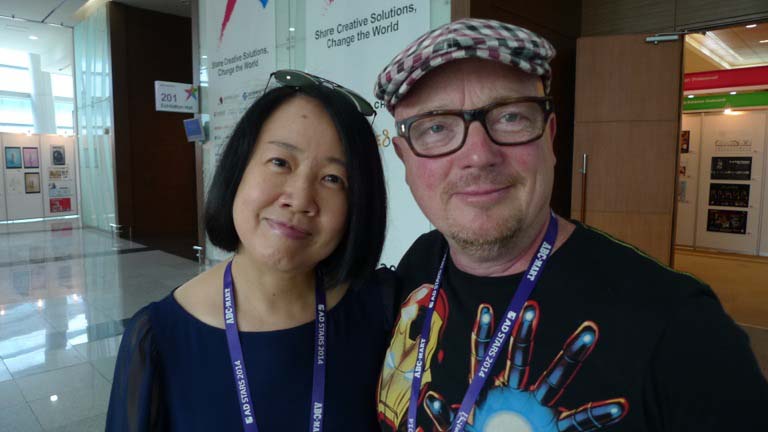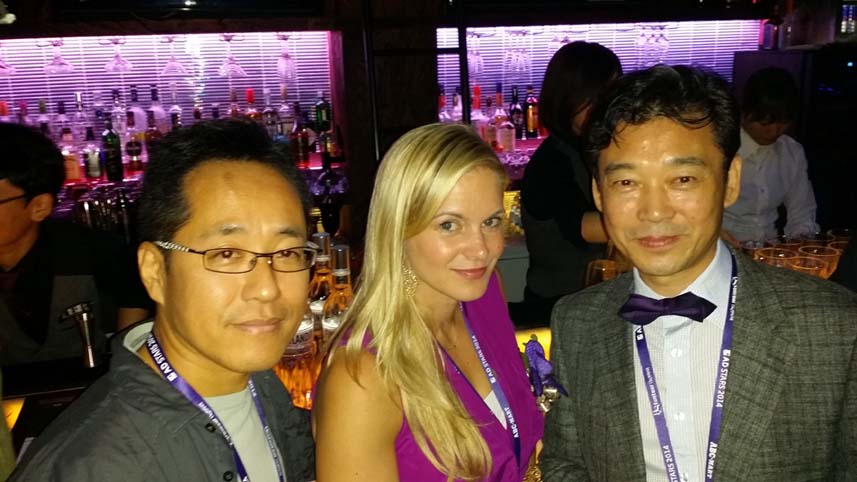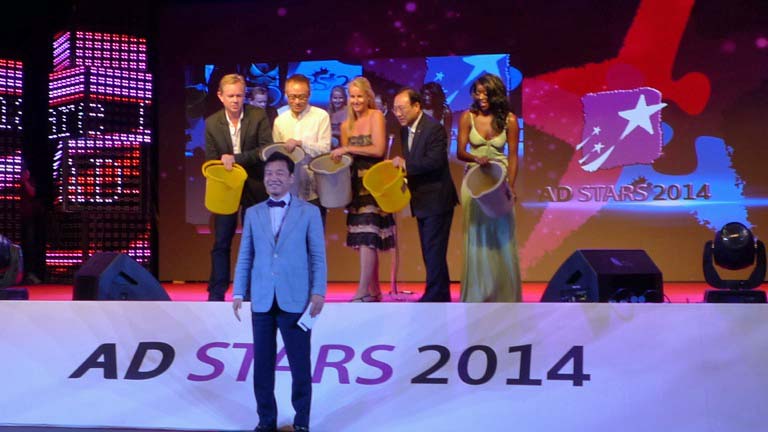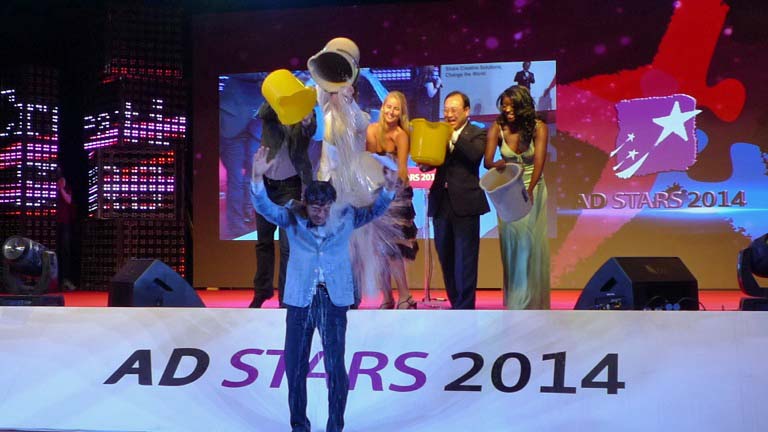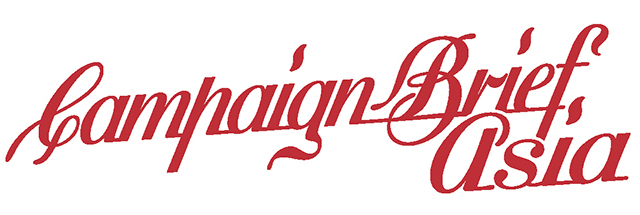Claire Davidson on the day three seminars at the 2014 AdStars Festival in Busan, South Korea
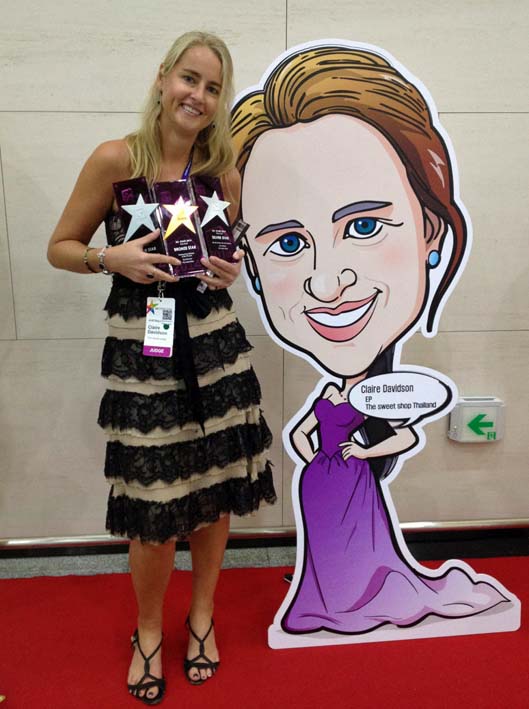 It’s the final day of AdStars 2014. It’s been a fantastic festival and already there is a feeling of sadness looming, in anticipation of saying goodbye later today. AdStars has seen many great relationships forged this year, and there will be plenty of tight group hugs tonight I’m sure.
It’s the final day of AdStars 2014. It’s been a fantastic festival and already there is a feeling of sadness looming, in anticipation of saying goodbye later today. AdStars has seen many great relationships forged this year, and there will be plenty of tight group hugs tonight I’m sure.
First up for me this morning was a discussion between the jury and the competitors of the NewStars competition. Last night we judged the NewStars work. 24 teams from South Korea, Japan and China competed to produce strategies and creative ideas for campaigns – all within a limited time frame. The client was ABC Mart and based on a creative brief provided by us judges, teams could choose to create for Nuovo, a female shoe brand or Danner, a male shoe brand.
The work presented to us last night was incredibly impressive, and today we talked about the procedure and thought process we took in judging, as well as spoke to these young creatives about big ideas, winning ideas, client relationships, current trends, technology and local vs global work.
Stan Kim, Industry Manager, Technology of Google brought us the first seminar today, titled “Journey from Madison Avenue to Silicon Valley”.
An evolution has been happening in recent years in the US of A in our world of mass media and mass communication. Most people traditionally think of Madison Avenue as a stretch of advertising agencies. Well, that’s what it’s always been. It’s represented the ad industry for nearly a century.
However, in today’s world where the focus has shifted to technology and digital + online media, we’ve found there has also been a shift in ,landscape, from Madison Avenue to Silicon Valley. Silicon Valley is home to many of the world’s technology corporations as well as thousands of small start ups. It’s become the root of high-tech innovation and development. In seven years Twitter has become valued at 25 billion vs 250 million for the Washington Post.
Google lives in Silicon Valley as well. As one of the world’s biggest tech companies, how much has Google influenced this shift? Well it’s really hard to put an exact measure on it, isn’t it, but I’m sure that Google would be able to.
Google’s mission statement is “we organise the world’s information and make it universally accessible and useful”. This has a huge influence across all industries, but particularly on ours. Google has produced high tech products and a lot of money has been invested into this. Interestingly, 90% of revenue from Google has come from advertising.
Taking a look back at the recent history of advertising, Kim asked us to consider:
~ The 1st era before the 1960’s. This was copy. Think Don Draper. Think Mad Men.
~ The 2nd era of the late 60’s and 70’s had copywriters and art directors sit in the same room.
~ The 3rd era, jumping ahead, is the era we are currently living in, says goodbye to art and copy, and hello to Idea Engineers. Today is about code.
Code is language, creatives and experience.
Google has brought about art, copy and code as a series of experiments. It is an innovation programme at Google that explores technology-led approaches to storytelling and customer engagement in the digital age. This innovation was inspired by the creative revolution of the 60’s, when everything simply changed by partnering up art directors and copywriters. The idea of a creative team being made up of art and copy was born. Today we’re in the midst of a 2nd creative revolution, one that is led by technology.
We took a look at “Burberry Kisses” and used this as a case study example.
In the conventional and traditional way, work was done by the advertiser and the advertising agency, following the standard process of:
Needs -> concept -> creatives -> production -> on air release
Here there was no room for customer or user.
Today the ‘revolutionary’ is:
Data -> API -> participation -> share
as the new communication platform. It’s this that leads to storytelling.
Learning code is important. But also break up silos in your company. Break the barrier between yourself and other people in your company. Innovation is possible when there is no barrier within your company. Collaborate with your colleagues and peers, but more importantly collaborate with people outside of your business.
As Don Draper said, “advertising is based on one thing – happiness”. So let’s take into account all of the above and also follow Don’s motto. Because we all love Don. Don’s great.

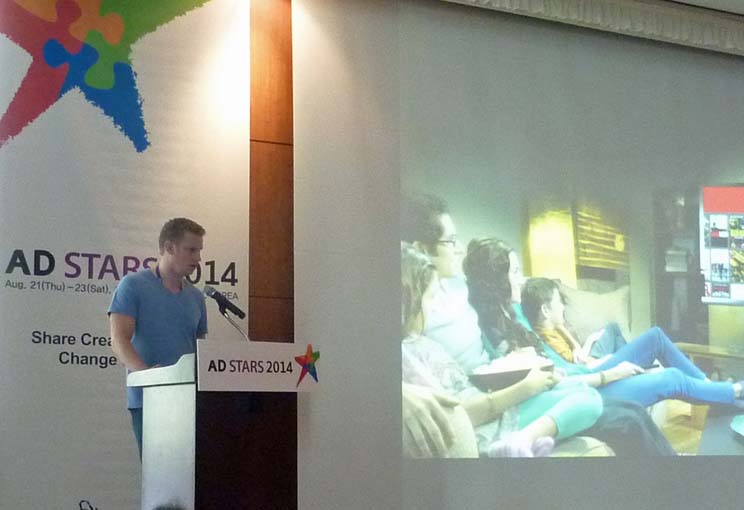 Next up Rindert Dalstra, Digital Strategic Planner of TBWA, Belgium brought us “Innovate or Die”.
Next up Rindert Dalstra, Digital Strategic Planner of TBWA, Belgium brought us “Innovate or Die”.
Dalstra stated by telling us what we need to do if we want to stay in this crazy game called advertising:
~ Reinvent your business model
~ Reinvent your customer relationship
~ Reinvent you organizational structure
How do our companies (and our brains) keep up with this fast paced world? Fortune 500 companies generally survived close to 60 years in the 1960’s. Today it’s only 19 years. That’s a scary stat.
Let’s start and take a great example: 3M. They began as a Minnesota Mining and Manufacturing Company, who are now known for their Post It Notes. They saw that they needed to change.
Now, lets take a couple of not so great examples: Kodak. Blockbuster. Atari. The day Kodak filed for bankruptcy, Instagram was sold to Facebook for $1 billion. Interestingly, Fuji Film was able to reinvent itself. It now uses its knowledge in manufacturing cosmetics. Nokia, once one of the biggest companies in the world, is now trying to survive while messenger service Whatsapp has been sold for $19 billion to Facebook.
Watch out for these new players. Some good examples include Uber and Spotify. Eat or be eaten. Small companies can become big companies. But that’s no reason to turn your back on the big four – Apple, Amazon, Google and Facebook. In our backyards in Asia, we need to watch out for Baidu, Tencent and Alibaba
Google acquired over 75 companies in the past three years, and has $33 billion dollars in capital parked overseas. They are most likely going to start a bank. Google even plans to cure death. It will spend hundreds of millions on learning our genetic make up. Look ahead three to five years, and see what your company should be doing. Would it be dead?
By the time somebody is ready to buy your product, they most likely know more about it than your salesperson. You only have one customer relationship. Offline and online interactions do not belong in separate worlds.
Data is changing the world. Data is collected, translated, stored, analysed, strategised and utilised. Tesco today can even predict if somebody is pregnant (before even you know it) due to your shopping pattern. Facebook can predict break-ups from profile patterns. Also, take a look what people are doing in store. This is observational data. Digital is not somebody else’s job.
How it used to be: briefing -> strategy -> creation -> production
How it is now: it’s the same 4 factors but they all overlap one another
It’s now an age of our idea, not my idea.
Dalstra gave us this lovely quote by Ray Kroc, “If you’re green, you’re growing. If you’re ripe, you rot.”
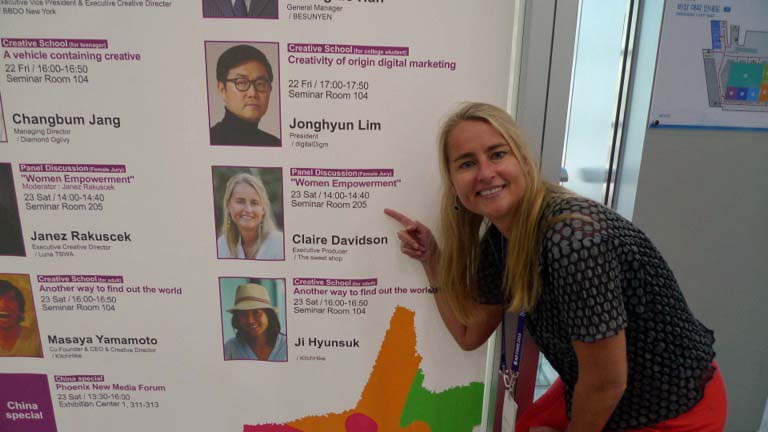
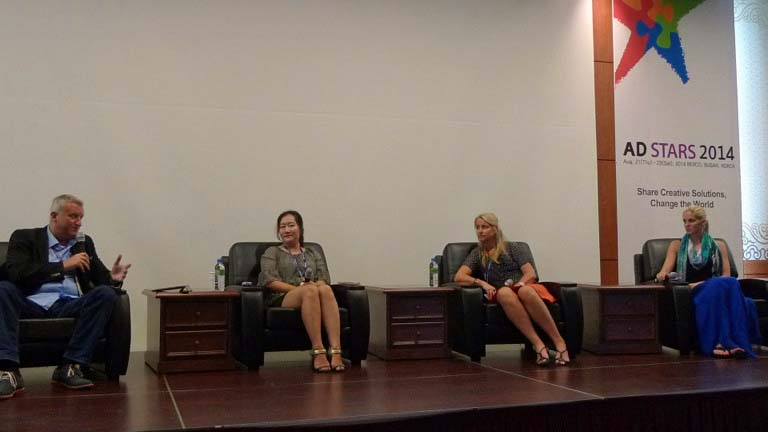 After lunch it was my turn to go on stage. Moderated by Janez Rakuscek, ECD of Luna TBWA, I joined fellow panel members Lauren Connolly, Executive Vice President and Executive Creative Director, BBDO New York and Kate Hye-Won Oh, Executive Creative Director of Cheil, Korea on stage to talk all things “Women Empowerment”.
After lunch it was my turn to go on stage. Moderated by Janez Rakuscek, ECD of Luna TBWA, I joined fellow panel members Lauren Connolly, Executive Vice President and Executive Creative Director, BBDO New York and Kate Hye-Won Oh, Executive Creative Director of Cheil, Korea on stage to talk all things “Women Empowerment”.
We covered topics such as women in the top positions in advertising, women making up only 3% of ECDs in agencies, if women need more luck to work in a predominantly male dominated industry, and gender inequality in ad agencies. We also discussed women making decisions on 80% of purchases these days, the workforce for women in certain cultures around the world and then wrapped up by talking about entries and judging at advertising festivals, specifically focusing on this year’s AdStars.
Finally for me today I took in “The Digital Marketing World Cup” with Masato Taketomi, President and Hiroko Nakamura, Content Director of dmg::events, Japan. Nakamura certainly showed dedication today. She was in a car accident here at lunchtime, but still decided to go on stage to talk to us, before going to the hospital to have a full check up, post crash.
We looked at how today marketers have had to adjust and modify their communication plans according to real-time customer trends and insights. Digital advertising spending worldwide will hit $137.53 billion in 2014, heading toward and even more staggering $204.01 billion for 2018.
ad:tech will bring us the Digital Marketing World Cup this year in cities such as Tokyo, Fukuoka, Osaka, San Francisco, New York, Delhi, Singapore, London and Shangahi. What is ad;tech? The company started twenty years ago. It’s the marketplace which convenes and connects people, builds a community and write business. Advertisers, agencies, media and solution providers are ad:tech’s main focus. It’s also a conference, exhibition and networking event.
Based on the philosophy of ad:tech, Nakamura asked marketers today to look in detail at:
~ Increased complexity / continuing fragmentation.
~ Platform, not product
~ Brands as content creators
~ Rise of big data
~ Innovation is global
Innovation may bring danger and / or opportunity.
That’s it for me today. It’s time soon to attend the AdStars 2014 gala awards and closing ceremony. Good luck to all of the finalists. Thank you once again AdStars and Busan for having me, it has been an absolute pleasure. See you again next year.
Claire Davidson, Executive Producer ASIA & MENA @ The SweetShop, reporting for Campaign Brief Asia at AdStars 2014.

